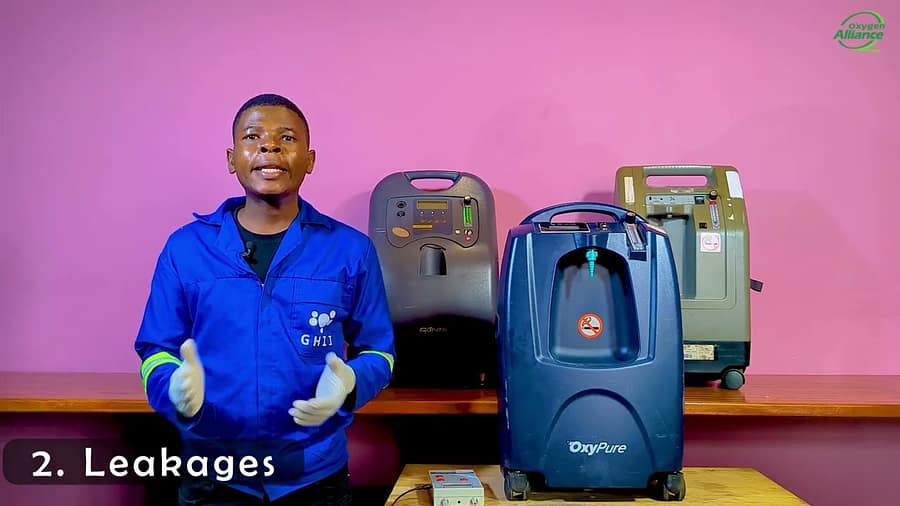Objective and Scope
When an oxygen concentrator fails to deliver the required level of oxygen purity, a systematic investigation is necessary. This protocol details the two foundational checks—input voltage verification and pneumatic leak detection—that a skilled technician must perform before proceeding to more complex component diagnostics. These two factors are the foundation upon which the entire oxygen generation process is built.
Mandatory Safety Precautions This protocol involves testing live electrical sockets. These procedures should only be performed by qualified biomedical professionals using appropriate personal protective equipment (PPE) and adhering to all electrical safety standards.
Foundational Check 1: Input Voltage Verification
Rationale
An oxygen concentrator is designed to operate within a specific voltage range, typically 220-240V or 110-120V depending on the region. If the input voltage is too low or unstable, the compressor cannot run at its optimal speed. This directly impacts its ability to generate the pressure required for the sieve beds to effectively separate nitrogen from the air.
Procedure
- Using a multimeter, perform a test at the power socket supplying the concentrator.
- Verify that the supplied voltage meets the manufacturer’s specifications for the device.
Corrective Action
Correcting a low voltage supply can, by itself, resolve a low purity issue.
Foundational Check 2: Pneumatic Leak Detection
Rationale
The pressure swing absorption process relies on maintaining a pressurized environment. Any leak, no matter how small, allows this crucial pressure to escape, undermining the efficiency of the separation process. A tell-tale sign of a significant leak is a low output pressure at the patient outlet.
Procedure
- Apply a soap water solution to all tubing connections and joints within the pneumatic circuit.
- The formation of bubbles will pinpoint the exact location of the escaping air.
Corrective Action
Leaks can often be resolved by simply tightening a loose fitting.
Conclusion: The Value of a Methodical Approach
This methodical process is the hallmark of an efficient and experienced technician. In many cases, the problem can be found and resolved at this early stage, saving hours of unnecessary and costly diagnostic work. This approach makes your work more effective and reinforces the principles of thorough and reliable maintenance.
Video Resource
To provide a clear, practical demonstration of these essential troubleshooting steps, a detailed video guide has been created. The video shows a technician using a multimeter to check input voltage and a soap solution to find a system leak, resolving a low oxygen purity problem in the process.
Watch the full troubleshooting video here:

